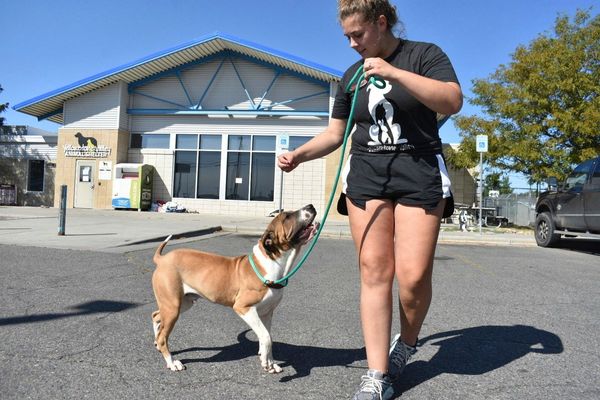
- Based on what live cattle and feeder cattle futures spreads were showing us at the end of March, both would lack the fundamental support that has helped push the move in cocoa.
- Funds were moving to the sidelines as well, though we know from past experience this group can change their mind, and subsequently a market's trend, in a hurry.
- A long-term comparison of the live cattle cash index shows a case could be made for a continued move higher.
I've added this introduction to the original piece. This was written over the past holiday weekend, my plan being to run it later this week. However, things changed with the news that broke Monday afternoon of a confirmed case of bird flu in a human who had contact with a dairy herd in question in Texas. Did It change my thoughts on what I wrote? No. But it did chance the discussion to one of Chaos, where the next headlines changes the speed of a market in a particular direction, if not the direction itself.
I often think of my late friends John Harrington and Walt Hackney. Not only did I enjoy their company, but they both had forgotten more about the cattle industry than I will ever know in my lifetime. They were old school cattle guys, or as I told them without complaint, raised in a feed yard. I distinctly remember, many years ago now, John calling me up one day just to talk about the broken cattle market (futures versus cash). If anyone else were to say that, it would be viewed as hyperbole. But not with John. While a brilliantly observant and funny writer, he also say things just to hear himself speak. As for Walt, some of my best times with him were on the Iowa Public Television show Market to Market. The host would ask him a short question, then we’d all sit back and listen to one of Walt’s historic answers.
I miss my friends. Their opinions on the latest chatter in the cattle markets is much needed. I’ve heard through the grapevine there is growing chatter of cattle markets, both live and feeder, being the next cocoa. What do I mean by this? As I talked about in this space recently, cocoa has posted a parabolic move of late with the nearby May contract increasing nearly 200% in value over the past 6 months. After hitting a low of $3,395 (per metric ton) on September 29, 2023 (the last trading day of the month), May cocoa hit a high of $10,080 on Tuesday, March 26 before closing the month at $9,766. While most of the move has been attributed to adverse weather in West Africa tied to El Nino, there are a number of geopolitical factors cutting into production as well. The bottom line is cocoa’s forward curve remains inverted at least out through the December 2025 contract, meaning fundamentals are expected to stay bullish.

When it comes to cattle, we have to ask if either or both markets have that same bullish fundamental support. Since cattle aren’t a storable commodity, we have to analyze each futures spread on its own historic merits. In other words, just because a live or feeder cattle spread is inverted doesn’t automatically mean it is bullish, as it would a storable commodity. The flip-side of that is a strong carry doesn’t make a cattle spread bearish. It all depends on how it compares historically. A look at the 5-year comparison table shows live and feeder cattle spreads (as well as lean hogs) were neutral at the end of March. Does this mean cattle can’t explode higher? No, but it does mean neither market has the fundamental catalyst for such a move.
What about the technical side? Let’s start with a look at live cattle futures trends for three different timeframes:
- Long-term (monthly charts): Things got interesting at the end of March as the nearby April futures contract (LEJ24) completed a bearish spike reversal on the continuous monthly chart. This indicates the long-term trend has turned down.
- Intermediate-term (weekly charts): Looking at the weekly chart for the more active June futures contract (LEM24) we see a new 4-week low posted last week. This confirms the intermediate-term trend has turned down as well.
- Short-term (daily charts): Here’s where things get fun, as market bears would argue the rally seen Thursday an Friday constitutes a bear flag, meaning there is more short-term downside potential. On the other hand, market bulls would say the short-term downtrend has run its course.
Why all the hubbub over trend? Newsom’s Market Rule #1 tells us: Don’t get crossways with the trend. Why? Because if we apply Newton’s First Law of Motion to market analysis we have: A trending market will stay in that trend until acted upon by an outside force, with that outside force usually noncommercial activity. In other words, if we get crossways with the trend, then we are fighting against Watson (my name for the algorithm investment industry in general). The latest CFTC Commitments of Traders report (legacy, futures only) showed us:
- Noncommercial traders decreased their net-long futures position in live cattle by 6,860 contracts, putting it at 66,910 contracts as of Tuesday, March 26
- This included a decrease in long futures by 5,154 contracts
- And an increase in short futures of 1,706 contracts
- The fact funds are increasing shorts and decreasing longs isn’t overly bullish for live cattle
- Noncommercial traders decreased their net-long futures position in feeder cattle by 3,476 contracts, putting it at 1,674 contracts as of Tuesday, March 26
- This included a decrease in long futures by 2,695 contracts
- And an increase in short futures of 781 contracts

Before we draw the curtain on this conversation, at least this time around, I want to take a look at the live cattle cash index. You’ll recall I’ve been tracking the National Corn Index, comparing it back to a decade ago, but what if we did the same thing with live cattle? Here we see the Live Cattle Index (LEY00) was in an uptrend (based on monthly closes only) from January 2009 through November 2014. The current move began back in June 2020, and if we see the similarity hold it would be expected to last through April 2026. In fact, based on percent of average moved, this ongoing pattern is stronger than what we saw a decade ago at this point.
Could cattle markets be the next cocoa? The basic structure of the market tells me know. But the bottom line monthly close-only trend of the cash index continues to say it is a possibility. This is one of those questions I’d like to bounce of John and Walt.
On the date of publication, Darin Newsom did not have (either directly or indirectly) positions in any of the securities mentioned in this article. All information and data in this article is solely for informational purposes. For more information please view the Barchart Disclosure Policy here.






